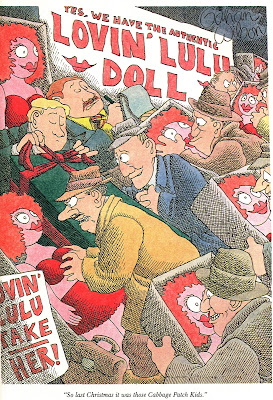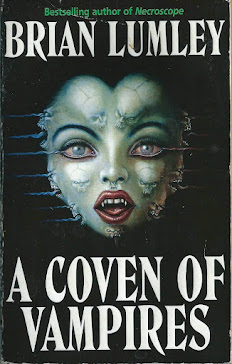Book Review: 'Dark Stars' by Thomas F. Monteleone
'Dark Stars and Other Illuminations' (181 pp.) was published by Doubleday / Science Fiction Book Club in April, 1981. As best as I can tell, no mass-market paperback edition ever was published.
Thomas F. Monteleone (b. 1946) began publishing sci-fi in 1975 when his novel 'Seeds of Change' was an entry in Harlequin Book's Laser Books imprint. Throughout the 1970s and 1980s he produced novels and short stories in a variety of genres. In the 1990s he was the editor for the successful 'Borderlands' horror and dark fantasy anthologies. He remained active through the 2010s in specialty press and eBook publications.
'Dark Stars' collects shorts stories, novellas, and plays, all first seeing print in the 1970s and early 1980s in anthologies such as 'Chrysalis' (Zebra Books), 'Shadows', and 'New Voices'.
My capsule summaries of the contents:
Roger Zelazny provides the Introduction, and each piece in turn has a preface from Monteleone in which he gives insights into his progress as a writer, and the inspiration for the story.
The Star-Filled Sea Is Smooth Tonight (1977): a space pilot, traumatized by the removal of his Virtual Reality implants, searches for healing. Monteleone recycled this story, retitled 'Prodigal Son', as his contribution to the 1991 vampire anthology 'Under the Fang'.
The Curandeiro (1977): in Brazil, strange things are going on in the village where a 'faith healer' has set up shop. An imaginative story and one of the better ones in the anthology.
Present Perfect (1974) a humorous tale about the cruel reality of the Slush Pile.
Just in the Niche of Time (1978): Frank Vecchio is being squeezed by the Mob. He finds succor in a most unusual way. Another humorous tale.
Mister Magister (1978): in his preface to this story Monteleone states that it was an effort to emulate the tenor of the television show The Twilight Zone, as the piece was to be published in an anthology celebrating Rod Serling's production. Like too many episodes of the show, 'Magister' has a preachy, overwrought quality that doesn't appeal to me.
Mister Magister: A Play on One Act (1978): this is a stage / teleplay Monteleone wrote based on the abovementioned story.
Camera Obscura (1977): when an explosion deprives renowned photographer Fred Lieberman of his sight, he receives sophisticated implants that restore his vision.......but show him things he never before has seen. This story tries in a very earnest manner to say something profound about Art, Loss, and the Human Condition.
Where All the Songs Are Sad (1978): vacationing with relatives in Sicily, Vincent Manzara learns about a troubling segment of the clan's history. A 'quiet' horror story that has sufficient punch in its closing pages to be successful.
The Dancer in the Darkness (1979): Paul, a slacker enjoying doing nothing of import while living in Cordoba, Spain, meets an alluring young woman named Lisa who is infatuated with flamenco dancing.
Like 'Where Are All the Songs Are Sad', this story is well-written and offers local color. But the melding of flamenco dancing and the supernatural is simply too mild a combination to make this tale a memorable treatment of the dark fantasy genre.
Taking the Night Train (1981): Ralphie Loggins is the club-footed barker for a strip bar on 42nd Street in New York City in the good, great days of the Sleazoid Express era. Riding the subway late at night, Ralphie sees something unusual......and decides to investigate......
This story starts off on a promising note, hinting at what might be a Clive Barker-ish journey into urban horror. But then, disappointingly, it goes off into retold Myth territory, in the same manner as Harlan Ellison did with his story 'On the Slab' (also which came out in 1981).
For me, the best part of 'Taking the Night Train' is the preface, in which Monteleone relates his horror at the state of 42nd Street and Times Square when he visited the city in the early 1980s:
What I discovered was a shock to the precious memories of wide-eyed youth. The place was filthy with trash, human and otherwise. All the first-run movie theaters were still there, but they were being crowded by sleazy little shops, hawking everything from crappy New York souvenirs to the full range of dope paraphernalia......there were also packs of derelicts, greasy-looking teenagers, and other variations of bad dudes......Massage parlors, 'adult' bookstores, peep shows, and topless bars had proliferated over the place like flies. It was the old Sodom and Gomorrah shtick........
One wishes Monteleone had arranged to have Bill Landis and Josh Alan Friedman ('Tales of Times Square') along as tour guides !
Summing up, 'Dark Stars' reflect the state of science fiction during the New Wave era, and horror fiction, during the Quiet Horror era. Editors favored submissions that centered on mood, characterization, atmosphere, and setting. Plotting was subordinate, and depictions of explicit violence and horror discouraged. These pieces by Monteleone met those criteria.
Although arguably there are more calories in a single page of a Joe Lansdale or William Gibson story than in any of the entire stories in 'Dark Stars', if you are someone who embraces the writing style of the New Wave and Quiet Horror eras, then you will find 'Dark Stars' worth searching out.

















































































